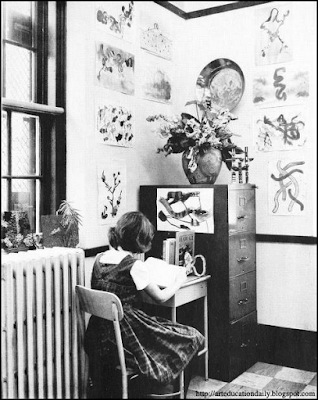Description: Audubon, a French-American ornithologist, hunter, and artist, developed his own methods for drawing birds. First, he killed them using fine shot. He then used wires to prop them into a natural position, unlike the common method of many ornithologists, who prepared and stuffed the specimens into a rigid pose. When working on a major specimen like an eagle, he would spend up to four 15-hour days, preparing, studying, and drawing it. His paintings of birds are set true-to-life in their natural habitat. He often portrayed them as if caught in motion, especially feeding or hunting. This was in stark contrast to the stiff representations of birds by his contemporaries, such as Alexander Wilson. Audubon based his paintings on his extensive field observations.
He worked primarily with watercolor early on. He added colored chalk or pastel to add softness to feathers, especially those of owls and herons. He employed multiple layers of water-color, and sometimes used gouache. All species were drawn life size that accounts for the contorted poses of the larger birds as Audubon strove to fit them within the page size. Smaller species were usually placed on branches with berries, fruit, and flowers. He used several birds in a drawing to present all views of anatomy and wings. Larger birds were often placed in their ground habitat or perching on stumps. At times, as with woodpeckers, he combined several species on one page to offer contrasting features. He frequently depicted the birds' nests and eggs, and occasionally natural predators, such as snakes. He usually illustrated male and female variations, and sometimes juveniles. In later drawings, Audubon used assistants to render the habitat for him. Going beyond faithful renderings of anatomy, Audubon employed carefully constructed composition, drama, and slightly exaggerated poses to achieve artistic as well as scientific effects. Read more...
Subject: Fine Art/Biology
Instruction Time: Three sessions at least
Materials needed:
- White drawing paper
- Audubon prototype
- Colored pencils and watercolors
Objective(s):
Show-Me Visual Art Standards for Missouri Schools
Strand I: Product/Performance – Select and apply two-dimensional media, techniques, and processes to communicate ideas and solve challenging visual art problems for all high school grades.
Show-Me Visual Art Standards for Missouri Schools
Strand I: Product/Performance – Select and apply two-dimensional media, techniques, and processes to communicate ideas and solve challenging visual art problems for all high school grades.
- Select and apply drawing media and techniques that demonstrate both sensitivity and subtlety in use of media and informed decision making
Strand IV: Interdisciplinary Connections, Explain the connections between Visual Art and Communication Arts, Math, Science or Social Studies
- Explain how historical events and social ideas are reflected in artworks from selected cultures or historical time periods.
Show-Me Standards for Biology
Strand 7: Scientific Inquiry – Science understanding is developed through the use of science process skills, scientific knowledge, scientific investigation, reasoning, and critical thinking
Strand 7: Scientific Inquiry – Science understanding is developed through the use of science process skills, scientific knowledge, scientific investigation, reasoning, and critical thinking
- Concept B. Scientific inquiry relies upon gathering evidence from qualitative and quantitative observations. - Determine the appropriate tools and techniques to collect, analyze and interpret data.
Phase 1: Clarify goals and establish set
- Students will study the watercolors and drawings of the famous orinthologist John James Audubon by observing a slide presentation, reading the attachment about him following this lesson plan and visiting web sites.
- Students will copy prototypes of Audubon’s work and develop their skills in watercolors and colored pencils.
Phase 2: Demonstrate knowledge or skill
Task Analysis: rewrite below
- Students will research the life of Audubon through a selection of provided materials.
- Students will select a prototype of James Audubon.
- Make tracings or stencils to transfer the prototype to fine watercolor paper and paint.
Phase 3: Provide Guided Practice
- The teacher will show a slide presentation of John James Audubon’s life.
- The teacher will assign to each student a prototype to work from.
- The teacher will demonstrate methods of watercolor and drawing to the class during the sessions.
Phase 4: Check for understanding and provide feedback – A standardized rubric will be used to analyze and critique each individual student’s artwork.
Phase 5: Provide extended practice and transfer – Students will be encouraged to create even more projects at home. Materials used during class and the research conducted on their own computers at home may be duplicated in their own home environment at very little expense.
Reflections: Reflections are attached to rubric. There is room enough for both the instructor and student to respond. Copies of reflections are returned to students to keep in their three ring binders. (phase 4 above)
Resources: The lesson plan adaptations and written content, excluding State Standards, is written and copyrighted by Kathy Grimm, 2009. The use of the ideas and 10% or less content constraint on previously published materials is met in accordance to United States copyright law. Some scientific definitions come from public domain resources. Interested parties may visit the following link to read about Fair Use and Teachers http://home.earthlink.net/~cnew/research.htm#Purpose%20of%20use










